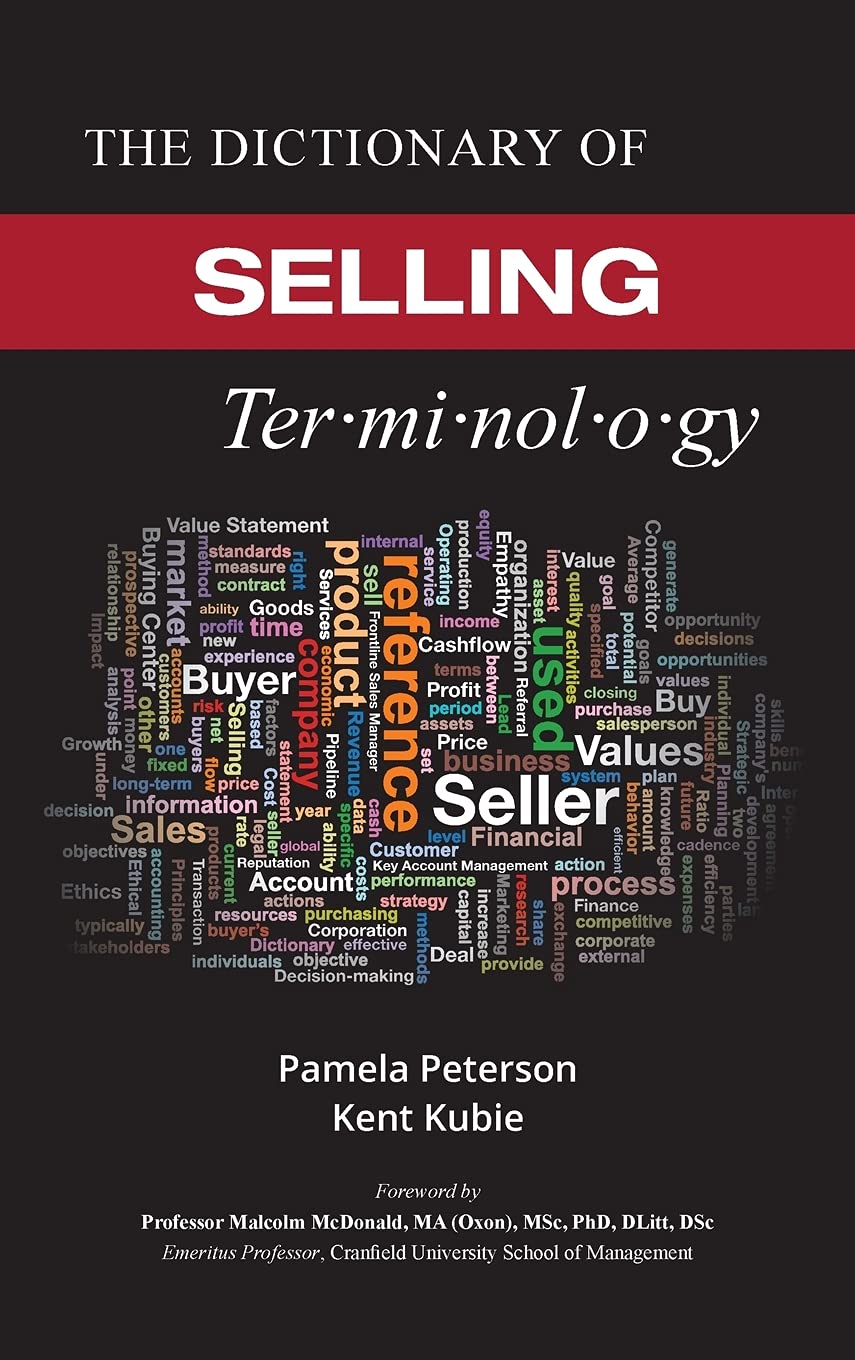Description
The Dictionary of Selling Terminology (DST or Dictionary) provides a comprehensive reference list of terminology and definitions used by sellers and buyers worldwide. Its goal is to establish a standardized and universal language to mitigate confusion and ambiguity caused by differing definitions in the selling and buying process.
Standardized terminology provides a common language, classification, and taxonomy based on consistent use of correct terms. This clarity resolves potential misunderstandings that arise from multiple interpretations or translations of terms.
The language of selling is not uniform. Each sales organization—whether for-profit or non-profit—has its unique terminology shaped by factors such as culture, industry, market sector, channels, competitors, and geography.
To standardize sales language, sellers must understand their products from the buyer’s perspective. Sales professionals and support roles must learn how prospective buyers and customers communicate—how they discuss problems, express feelings, and frame their needs.
Language evolves continuously, influenced by culture, markets, and industries. Many terms in the Dictionary reflect this evolution and will continue to change over time.
The Dictionary includes both legacy and current terms, with entries addressing the growing impact of technology and automation on sales and operations. These include concepts like buyer enablement, content management systems, contract lifecycle management, and customer relationship management.
Cross-functional terminology is also covered, reflecting departments that support sales organizations. Examples include Finance (revenue, gross profit, price), Marketing (promotion), Legal (compliance, governance, risk), Manufacturing (quality), and Ethics-related terms.
Sales professionals—including Chief Sales Officers, field and inside salespeople, frontline managers, Chief Learning Officers, Sales Enablement and Operations Directors, Key Account Managers, and Business Development Directors—as well as marketing professionals, will find this dictionary invaluable.
The Dictionary is also a vital resource for professionals in Supply Chain and Procurement, as well as those in supporting roles such as Finance, Legal, Accounting, Operations, and Human Resources. It helps all stakeholders gain a deeper understanding of the challenges faced by sales professionals and buyers.
Lifelong learning and intentional growth are essential to staying at the top of your game. Mastering the craft of your role includes learning its language, making this dictionary an indispensable tool.
If you have suggestions for words to include in the next edition of the Dictionary, please fill out this form.
Details
- ISBN (View all)
- 978-1-7358772-4-2
- Dimensions
- 6.0 x 9.0 in
- Length
- 276 pages
- Year Published
- 2021
Instructor Materials
This title includes access to course materials for verified instructors:- Choosing a selection results in a full page refresh.
- Opens in a new window.


